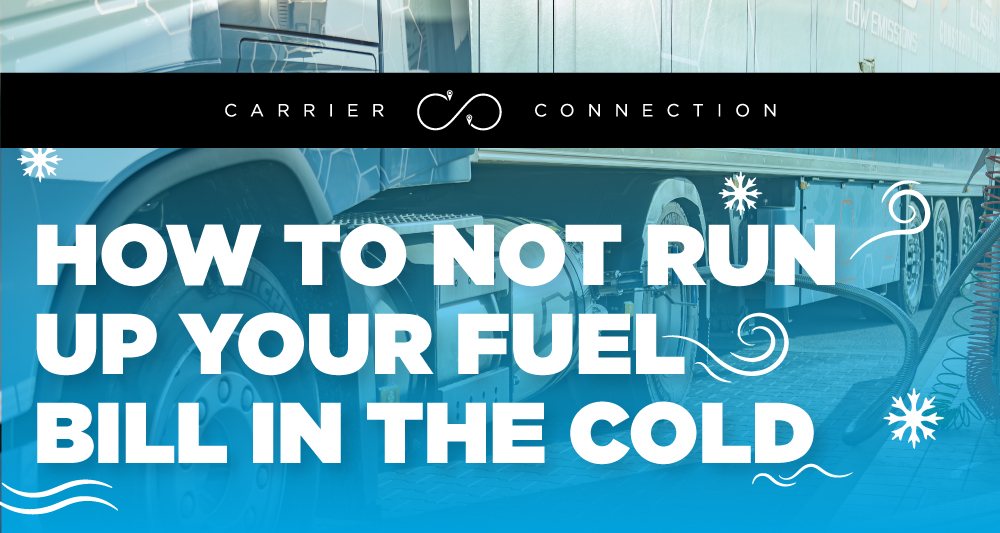![]()
You might already know that the cold can send chills down your wallet when paying for fuel… but do you know how much the cold weather affects fuel?
The US Department of Energy has concluded the following on fuel efficiency in cold weather:
- In gasoline-powered vehicles, most can expect to sustain a 10% to 20% fuel economy loss in city driving. If the trip is short, some vehicles can even take a 15% to 33% loss in fuel efficiency.
- The cold’s influence on hybrid vehicles is even more pronounced. When city driving, hybrid vehicles can lose anywhere from 20% to 40% fuel efficiency. That number rises to 25% to 45% in short trips.
A 45% increase in fuel charges can be staggering for truckers. Before learning how to cut fuel prices, it’s essential to know why cold weather affects fuel in the first place.
Why Does the Cold Weather Affect Fuel?
At its core, the issue of fuel efficiency in cold weather comes down to this: When temperatures drop, friction within the engine increases due to oil becoming more viscous. As a result, the engine takes longer to reach an ideal operating temperature.
In addition to the engine working harder, cold air is denser, making a vehicle less aerodynamic. When you compound these issues with the loss of tire pressure in cold temperatures, less grip on icy roads, and an orchestra of seat heaters, heated fans, window defrosters, and hand warmers operating in tandem, you can quickly see how hard your vehicle needs to work to function in the cold.
How to Improve Fuel Efficiency in Cold Weather
Poor fuel efficiency in the colder months isn’t reversible, but small steps can be taken to make a substantial difference. Here are a few tips.
- If possible, park your vehicle in a warm place. When your vehicle doesn’t need to work as hard to reach an optimum temperature for engine function, you can save significantly on fuel.
- Don’t idle. Warming your truck up a few minutes before you hop in can be tempting, but idling gets you exactly 0 MPG. Your best shot is to start your vehicle, wait 30 seconds, and gently begin driving.
- Check your tire pressure regularly. Deflated tires contribute to higher rolling resistance that slows your vehicle down, contributing to poor fuel efficiency.
- Remove any accessories that may contribute to wind resistance. If any of your vehicle is catching wind, you can be sure that your fuel price is taking the blow.
- When safe, avoid driving at slower speeds for extended periods. Your vehicle is most efficient at freeway speeds. Of course, if the weather is severe, exercise extreme caution.
Cold temperatures can put a freeze on your fuel budget. By understanding the influence of the cold on your engine and implementing best practices for your engine’s health, you can save thousands in fuel costs.
The England Carrier Services (ECS) division offers various services for carriers ranging from maintenance to support. As ECS members, carriers have access to nationwide discounts on fuel and tires from dedicated team members committed to finding the best price. ECS also provides factoring services with benefits such as same-day funding to a bank account or fuel card. These options allow carriers the freedom to focus on growing their business while saving time and money.



